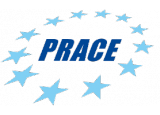Scientific Large-scale Infrastructure for Computing/Communication Experimental Studies – Design Study

Objective
Digital Infrastructures as the future Internet, constitutes the cornerstone of the digital transformation of our society. As such, Innovation in this domain represents an industrial need, a sovereignty concern and a security threat. Without Digital Infrastructure, none of the advanced services envisaged for our society is feasible. They are both highly sophisticated and diverse physical systems but at the same time, they form even more complex, evolving and massive virtual systems. Their design, deployment and operation are critical. In order to research and master Digital infrastructures, the research community needs to address significant challenges regarding their efficiency, trust, availability, reliability, range, end-to-end latency, security and privacy. Although some important work has been done on these topics, the stringent need for a scientific instrument, a test platform to support the research in this domain is an urgent concern. SLICES ambitions to provide a European-wide test-platform, providing advanced compute, storage and network components, interconnected by dedicated high-speed links. This will be the main experimental collaborative instrument for researchers at the European level, to explore and push further, the envelope of the future Internet. A strong, although fragmented expertise, exists in Europe and could be leveraged to build it. SLICES is our answer to this need. It is ambitious, practical but overall timely and necessary. The main objective of SLICES-DS is to adequately design SLICES in order to strengthen research excellence and innovation capacity of European researchers and scientists in the design and operation of Digital Infrastructures. The SLICES Design study will build upon the experience of the existing core group of partners, to prepare in details the conceptual and technical design of the new leading edge SLICES-RI for the next phases of the RI’s lifecycle.
Project Information
- URL: http://slices-ri.eu/ and CORDIS web site
- Starting date: 2020, September 1st
- End date: 2022, August 31th






